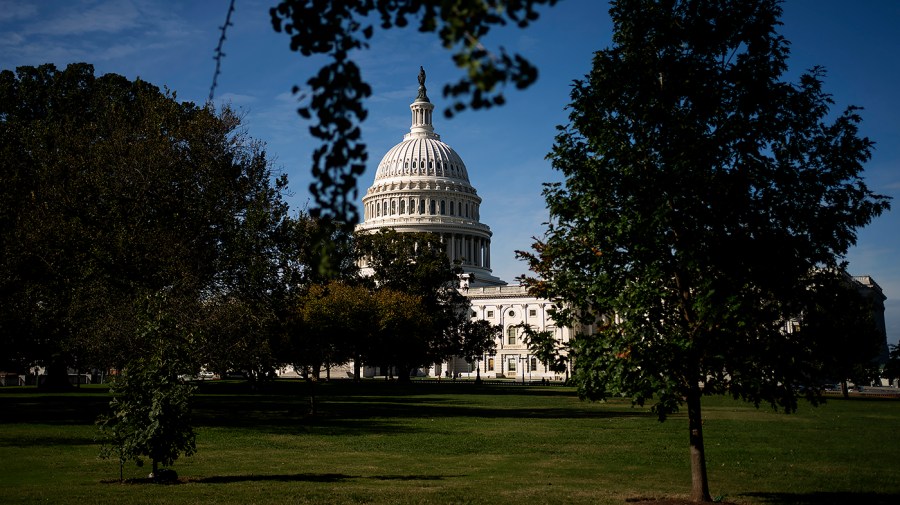
Republicans on Tuesday captured the Senate, Decision Desk HQ projects, ending their painful four-year stretch in the minority after picking up retiring Sen. Joe Manchin’s (I) seat in West Virginia and knocking off incumbent Sen. Jon Tester (D) in Montana.
The victories come as a welcome relief to Republican senators after two disappointing election cycles. They lost two run-off elections in Georgia to lose their majority in 2020 and failed to win back the majority in 2022 despite early projections.
Republicans entered the election cycle as favorites to recapture the Senate as Democrats had to defend 23 seats — including four rated as “toss-ups” and one rated “lean Republican” — while Republicans only had to worry about 11 seats, all in states that supported Trump in 2016 and 2020.
Republican candidates were also helped by voters’ sour view of the economy and inflation during President Biden’s four years in office.
Twenty-four percent of voters in battleground states such as Arizona, Michigan, Nevada, Pennsylvania and Wisconsin rated the economy as the most important issue in deciding their vote, according to a New York Times/Siena College poll conducted from Oct. 24 to Nov. 2.
Senate Republicans survived scares in Nebraska and Texas, two GOP strongholds, where independent Dan Osborn threatened low-profile Sen. Deb Fischer (R-Neb.) and Rep. Colin Allred (D-Texas), a former NFL linebacker, trailed Sen. Ted Cruz (R-Texas) by only a few points in the final weeks of the race.
The vulnerable Republican incumbents were helped by Trump’s strong showing atop the ticket in both states.
Except for Montana, where Tester had trailed his opponent in the polls by a significant margin since mid-August, Democratic incumbents had run ahead of their challengers, outpacing Biden and later Vice President Harris.
But the polls began to tighten in late October as Sens. Bob Casey (D) and Tammy Baldwin (D) saw their leads shrink in Pennsylvania and Wisconsin, and Sen. Sherrod Brown (D-Ohio) fell behind businessman Bernie Moreno in the final days of the Ohio race.
Depending on what happens in the presidential race, Senate Republicans will now serve as a major check on a new Harris-Walz administration or as crucial allies to Donald Trump in his second term.
Senate Republican leaders have already warned that Harris will have a tough time getting through the Senate any executive branch or judicial nominees who strays too far from the political center.
The Republican senators running to succeed Sen. Mitch McConnell (Ky.) as Senate GOP leader have already pledged to work closely with Trump to get his agenda through Congress.
“Because we have the power of confirmation, I think they’re going to have to think long and hard about who they submit and whether or not they can get them through the Senate,” Senate Republican Whip John Thune (S.D.) warned in September.
A White House and Senate divided between different parties would set up a battle royale should another seat become vacant on the conservative Supreme Court.
The two oldest justices are Clarence Thomas, who is 76, and Samuel Alito, who is 74, the driving forces behind the 2022 decision in Dobbs v. Jackson Women’s Health Organization that overturned the national right to abortion.
McConnell, Thune and the new incoming chairman of the Senate Finance Committee, Mike Crapo (R) of Idaho, have spent the last several months laying the groundwork for renewing the Trump-era tax cuts that are due to expire at the end of 2025.
McConnell and National Republican Senatorial Committee Chairman Steve Daines (Mont.) were the chief architects of the Republican Senate takeover, spending months recruiting candidates who could knock off entrenched Democratic incumbents such as Manchin and Tester.
McConnell flew out to West Virginia to persuade popular two-term Gov. Jim Justice to challenge Manchin, scoring a big win when Justice entered the race in April of last year.
Justice had a higher approval rating than Manchin in a state that Trump carried by huge margins in 2016 and 2020, setting up a serious challenge for the three-term Democratic incumbent.
Eventually, Manchin decided to skip a bruising fight where he would have had a 50-50 chance — or less — of winning and announced his retirement in November of last year.
Daines set the stage for victory in Montana by recruiting businessman and former Navy SEAL Tim Sheehy, a decorated combat veteran, to run against Tester. He helped pave Sheehy’s path to the GOP nomination by helping to persuade Trump to endorse him.
Trump’s support closed off any chance that conservative Rep. Matt Rosendale (R-Mont.), who lost to Tester in 2018, might have had to win the nomination himself.
Rosendale, who represents half of Montana in the House, had a major advantage in name recognition over Sheehy when he jumped into the race in February but McConnell and Daines had their doubts about his ability to beat Tester.
He dropped out of the race after Trump backed Sheehy.
The Hill’s Decision Desk HQ in October gave Republicans a 71 percent chance of winning the Senate and other handicappers viewed them as favorites.
The lofty expectations of returning to the majority helped the NRSC raise more than $260 million, according to Open Secrets, a website that tracks federal fundraising reports.
The Democratic Senatorial Campaign Committee raised $241 million, according to public reports filed through Nov. 5.
Battle-tested Democratic incumbents, however, maintained a big fundraising advantage over their Republican challengers.
Democratic candidates held fundraising leads over their opponents in the 11 most competitive Senate races. In eight of those contests, Democrats raised more than twice as much as Republicans and in three, they raised three times as much, according to The Washington Post.














